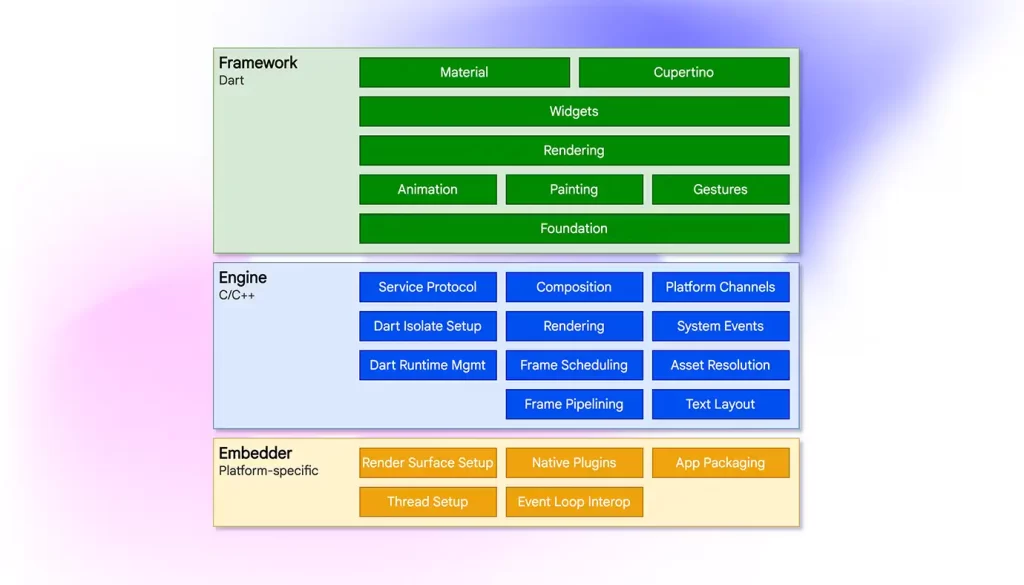Explain the Flutter architecture.

The architecture of Flutter, Google’s UI toolkit for building natively compiled applications for mobile, web, and desktop from a single codebase, consists of several key components:
Dart Language: Flutter uses Dart, a statically typed, object-oriented programming language with C-style syntax. Dart is used for building applications in Flutter, and it provides features such as garbage collection, null safety, and a rich standard library.
Flutter Engine: The Flutter engine is the core component of the framework, responsible for rendering graphics and animations, handling gestures, and managing the application’s lifecycle.
Widgets: Flutter uses a widget-based approach to building UIs, where widgets are the basic building blocks of an interface. There are two types of widgets in Flutter: stateless and stateful.
Render Tree: Flutter uses a high-performance render tree to draw the widgets on the screen. The render tree is a tree-like structure that describes the layout and appearance of the widgets.
Flutter Framework: The Flutter framework is a collection of libraries and tools that provide a set of common functionality to build applications, such as handling navigation, data persistence, and network communication.
Flutter Package Ecosystem: Flutter has a thriving package



